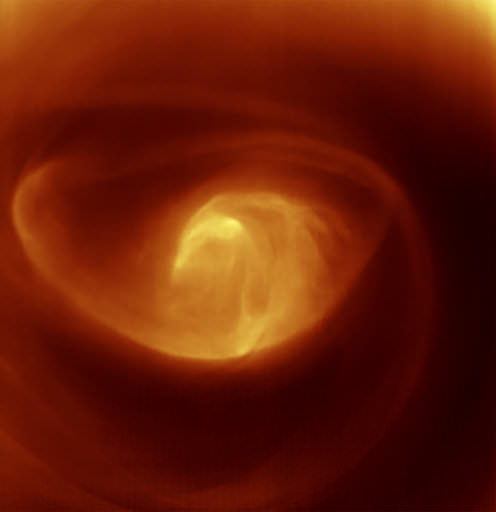Here’s the latest view of the mass of swirling gas and clouds at Venus’ south pole. The Venus Express’s Visible and Infrared Thermal Imaging Spectrometer (VIRTIS) has been keeping an eye on this polar vortex since the spacecraft arrived and discovered this huge storm in 2006. During the mission, VIRTIS has seen the vortex constantly transform, morphing from a double vortex into a squashed shape and into the eye-like structure seen here.
This image was taken in April 2007 but was just released this week.
Venus has a very choppy and fast-moving atmosphere, even though wind speeds are much slower at the planet’s surface. At the cloud tops about 70 km above the surface, winds can reach 400 km/h. At this altitude, Venus’ atmosphere spins about 60 times faster than the planet itself. Compared to Earth, this is a dizzying speed: even Earth’s fastest winds move at most about 30% of our planet’s rotation speed.
These polar vortices form when heated air from equatorial latitudes rises and spirals towards the poles, carried by the fast winds. As the air converges on the pole and then sinks.
High velocity winds spin westwards around the planet, and take just four days to complete a rotation. This ‘super-rotation’, combined with the natural recycling of hot air in the atmosphere, would induce the formation of a vortex structure over each pole.
A video of the vortex, made from 10 images taken over a period of five hours, can be seen here. The vortex rotates with a period of around 44 hours.
Source: ESA

